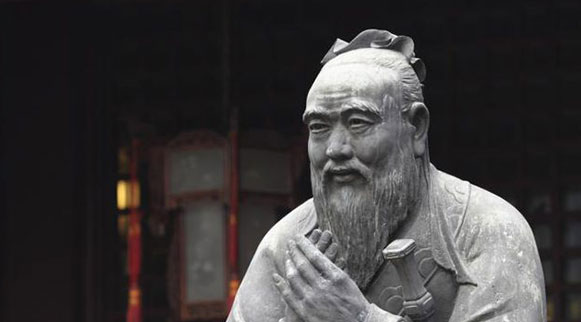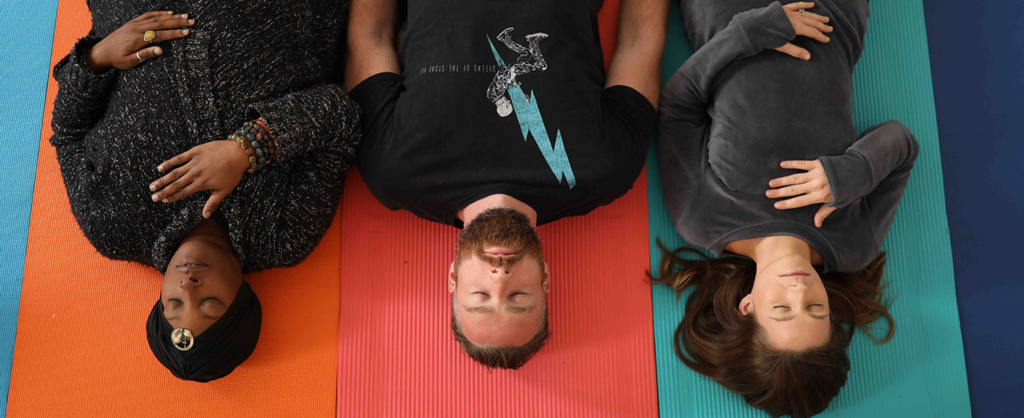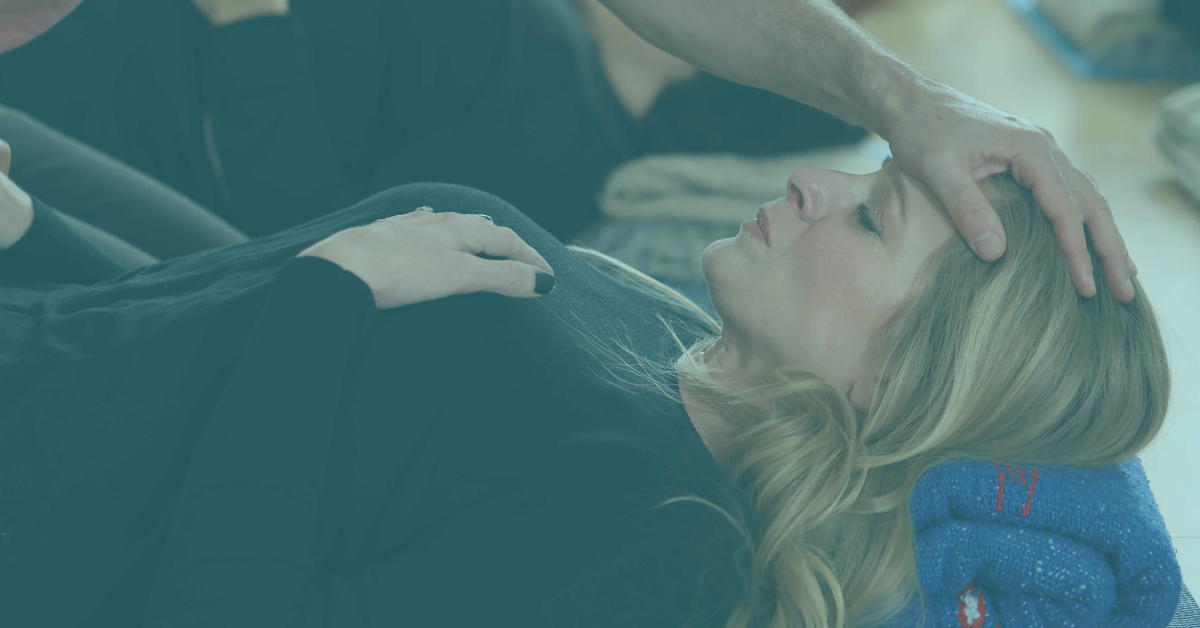Part 1.
Breathwork and meditation are two fundamental practices you can do for personal development. When we talk about breathwork I am speaking specifically about the Effiji Breath Technique. Effiji Breathwork focuses specifically on mouth breathing and is done to clear core patterns and programs stored deep in the cellular memory. To understand these two practices, you should first understand what they are not. Neither is specifically associated with a religious faith, nor are they practices only meant for so-called spiritual people. Most importantly neither are the panacea for all suffering. Spiritual practices, at their core, are simply tools for better living. They have the same purpose today as they did thousands of years ago when they were first discovered.
Meditation has been given to us from eastern culture (specifically Buddhism), so it is easy to fall under the false assumption that it is a religious practice. Meditation, at its core, is the practice of witnessing the breath and the mind. There are many variations. One of the most well known meditation practices is Vipassana; which translates into English as “insight”. Practicing Vipassana is to gain sight into yourself. Generally in a meditation practice you sit cross legged on the floor and watch your breath and thoughts without getting attached to them. Eventually, you can come to the awareness that you are not the thoughts or the body, but the watcher of both. By recognizing you are the watcher you can reduce the suffering that comes from being attached to the transient experiences of the mind and body.
Are there experiences beyond mind and body? Yes! At the very least, you have emotions. Emotions also come and go, but there is a more important level of life which is found inside your breath. It is the spiritual world. The world you came from before you were born and took that first breath. Breath is literally spirit into your body.

In my book, A Liberated Life, I refer to four levels of existence; a physical level, a structural or mental level, an energetic level and a spiritual level. The spiritual level is where we came from and will return to. When we work on ourselves we are training our body, mind and energy, however the spiritual level of us is tied to the perfection of the universe. Our job is to allow it to infuse and direct our daily life. When we take on a spiritual practice we are practicing releasing the lower levels and allowing spirit to be the master.
The purpose of any spiritual practice is to create space for your spiritual nature to exist in your daily life.
When you start searching out methods, teachers and lineages, you will see multitudes of paths and approaches to gaining insight into one’s self. This is simply because anyone with an opinion who learned something from someone can easily start their own version. I did that with Effiji Breath and my teacher. The longer a lineage is around, the more people project a sort of magic onto it. But it really does start with a person who has a strong opinion about how to grow. I am going to tell you a bit about my journey so you can understand how I arrive at the opinions I have:
My breathwork teacher, Tom Lodge, was a Zen student who later became an Osho disciple which is where he discovered breathwork in the 1970’s. Zen meditation is quite similar to Vipassana likely because India, China, and Japan are so close to one another, most certainly there had to be cross pollinating of methods.


Zen practice is based on Taoist philosophy which includes meditation. Zen is considered a way of life. The word Tao though simply means “way or path”. It’s not a magical word. You can go to China and see plenty of street names with the word tao. The philosophy of the Tao came from Lao Tzu who didn’t believe you could put the truth into words. But as he was trying to leave China, they wouldn’t let him go unless he did. What he passed on is known as the Tao-Te-Ching. The opening lines say “The Tao that can be spoken is not the Tao”.
Zazen Meditation
In Zen practice there is a strict way to do every single action from eating to walking. Through this forced strictness the goal is to become more aware of how you are doing what you are doing. The phrase “chop wood carry water” means to do what you are doing and not be somewhere else while you are doing it. Zen is the ultimate in not-multitasking. Every act everyday is intentionally mundane. You meditate, walk, sit, eat etc.. Each act taken with one’s full attention on it and repeat it everyday without altering any aspect of it. During meditation practice, called Zazen, you sit with your palms in your lap face up, thumbs touching. If you nod off your thumbs will separate and the Jikijitsu (the monk in charge) will come over and smack you on the shoulders with a stick to wake you up. Tom did a lot of this practice and told me that the late singer songwriter, Leonard Cohen was often his jikijitsu back in the 1970’s.
Tom eventually went off to India in the 1970’s and discovered the breathwork in the Osho commune in Pune. He eventually came back to Canada and put together his own version of breathwork. It was a combination of Zen philosophy and mouth breathing breathwork. He taught this to me in 1991 and after ten years of my own experiences with it, I left Tom and came up with Effiji Breath in 2001. What I kept from Tom’s version was the rapid mouth breathing to accelerate the process of the mind and body releasing old stored programming. At its core, Effiji Breathwork is a sped up meditation practice. The job of the person is still the same; to allow and witness what arises.
Context Matters
The most powerful influence on any practice whether you choose Breathwork or meditation is you. Anytime we begin to learn something new we are filled with our ideals and concepts about how it all works and unaware of what our weaknesses are going in. That is what we take to the teacher without realizing it and it is certainly going to affect how we begin to practice.
I was about 30 years old when I became Tom’s serious student. I had a one year old child and I was pretty much a child myself. I was in a desperate search for my spirituality as well as a need to escape the world that I felt misunderstood by. Tom would have me get up at 4 am every day and meditate for an hour. During the practice I was mostly either thinking or nodding off. I was also doing breathwork which was making my senses and awareness more heightened while conversely making me feel less grounded and functional on a day-to-day basis. So indeed I was experiencing what I hoped for; spiritual experiences and transcending my life. The more I got into the practice the more difficult regular life became. There was no balance and Tom being from a Zen tradition was not into talking about the process because he considered it useless mental activity. Doing my practice under these conditions was like sweeping out a dusty attic without opening the windows. His teaching methods were experiential and at times harsh. He would find ways to amplify my condition so I would see it. It worked on one level but I never experienced him coming from love. It’s not to say he didn’t, but without explaining or counseling me in any way, I never felt it.
Spiritual practices come from a teacher and you are doing them from exactly where you are. The practice is only one part.
Meditation is both a verb and a noun
Just before my split with Tom I had a spiritual awakening which occurred somewhat randomly during another activity. When I went back to meditate, I just sat there and watched. There was literally no mind present. It took no effort and there was none of the monkey mind going all over the place. It occurred to me later that active westerners generally see meditation as a verb, as in “I am going to go meditate now”, yet meditation is also a state, the state of no-mind. The practice is an action meant to induce the state. If you are in the state of meditation there’s nothing to do, nothing to practice.
Breathwork and Meditation are what you do to try to achieve the state of meditation. Being in that state during your spiritual practice is not the goal.
So when you think your practice isn’t effective consider whether you believe something wonderful should be happening during your practice. Practicing is not performing. Practicing is about being inside the problem in order to improve something you’re working on. Breathwork and meditation help to harness the energy of the monkey mind. To elicit change, the first step is to see the problem, the problem of being attached to thoughts and feelings.
If you want to take on a spiritual practice like breathwork and meditation, my opinion is simple; make sure it’s something that you will be willing to do because you’ll be doing it a lot and you are going to be in constant contact with internal struggles.
Vipassana
Prior to that awakening, there was a period where Tom had left for England and I was on my own. I decided to go to a Vipassana retreat in the lineage of Goenka. Their set up is quite simple. It’s free (at least at first) with food, shelter and teaching provided. Your job is to sit for 10 days with 14 hours a day of no talking, exercise or eye contact with others. According to Goenka, this practice came directly from Siddhartha Buddha. Goenka having passed on, the retreat consisted of audio and videos of him giving instruction. While there were teachers you could arrange to speak to it wasn’t encouraged.
Since there was nothing to do and nothing happening, the practice clearly demonstrated the mind’s activity regardless of the external world. However, without a living teacher to address my state directly, I didn’t have anyone to tell me I was right or wrong. So I could make of it whatever I wanted and no one could correct me. When I came out of the retreat I was very intoxicated when reconnecting with my girlfriend who came with me. I had not talked in ten days and the first words out of my mouth were the first thoughts in my mind: “Will you marry me?” In other words, I was still following whatever came up in my mind even though I had sat and watched myself non-stop for ten days. My point again: A practice is only as good as the practitioner.
The power of a practice has a lot to do with the way the practitioner approaches it. I believe it’s the teachers job to know the students inner state and help them with their approach to make the journey as effective as possible.
The practice is one part of it. The person doing it is another. Not every practice is the right thing for everyone. I am weary of the one-size-fits-all way that methods are presented. At the Vipassana retreat, they said if I do the practice correctly eventually I will awaken like Buddah did. But that sets up the business perfectly where a person who doesn’t awaken has to go back over and over. A person with self worth issues can see themselves as someone who isn’t doing it right and believe they are broken.
Approaching spiritual work from the perspective that you're fucked up is not a good way to encourage yourself to grow.
About 10 years later as my life started to truly unravel (somewhat documented in my book A Liberated Life), I went on antidepressants and took some time off and decided the structure of going back to the Vipassana retreat might help. At this point I had other teachers so I went to them before the retreat. I was involved with the Sufi’s and went to my teacher and asked for some advice about how to approach the retreat this time around. I wondered, since I was already doing Sufi practice, whether there was some conflict going on. He told me that I was ‘my own man’ and I could do whatever I wanted while sitting in meditation. If I wanted to chant the name of God no one was going to know. He took some pressure off of my fear of going against the rules. Next stop before Vipassana, I went over my Taiji teacher who was leading a workshop the weekend prior to the retreat. The workshop was powerful and I felt so good and grounded I wanted to keep practicing. I resolved I would do the Taiji he shared over the weekend, every morning before the first sitting at 4am. There were a few problems though. I had signed a waiver saying I would not take on any other practices including stretching and yoga. They were very strict about it. So I entered the second trip to Vipassana, a man two weeks on antidepressants, who had spiritual practices from another tradition and would be practicing Taiji in secret.
The videos the first two nights were about letting the feelings come up like pus. This was exactly the same philosophy as the breathwork except instead of breathing you just sat. (Incidentally I had been on a hiatus from breathwork for about 5 years and it hadn’t even occurred to me to look to it for help). The problem for me about letting things up was I was taking antidepressants to literally keep that shit down so I wasn’t sure if I was in conflict taking drugs and meditating. I decided to request an audience with a teacher on day two.
When I went to see the teacher I asked him if I should stop taking the anti-depressants. He had a series of responses that I believe were stock things he was trained to say but he was unable to answer my question. He didn’t seem to have an opinion or any strong energy to affect my direction or attitude. That meeting left me feeling rudderless and untrusting of the process.
After 3 days of hiding in the bushes at 3am to practice Taiji, things were coming to head. The more I sat the more creative ideas came to me. I could feel my soul stirring and meditating was feeling like the wrong practice. I felt strongly that I should go home and do something with what I was feeling.

There is a pivotal moment in many a student’s lives and in any therapeutic relationship where you see that you know something to be true that conflicts with your agreement to trust the other parties authority to influence your perception and choices. At what point do you realize you don’t need the guidance anymore and what happens when you want to leave? Do they support you, empower you, disagree with you or manipulate you?
After the meeting with the teacher I went to meditation and a voice inside me said “you need to leave this retreat. It is not your path or your practice.” I resisted it at first fearing conflict with the organization. When I finally decided to leave and speak up I wanted to do this differently and be honoring and respectful but no teacher would talk to me. I was told that I needed to keep practicing. When I said then I was going to leave I was told I could speak to the head teacher but I would have to wait until the next day. I again said I would be gone by then. Then I was told to wait until after that evening’s video. I waited until after that night’s video and the same teacher I spoke to came up to me and said “So? What did you think?”, meaning did I make the change he wanted me to make. I realized they were not listening. I said I still wanted to speak to the teacher. I was ushered into a room with a bunch of students sitting on the floor around a teacher sitting up in a chair. I thanked him for the work they did and said I was honored to be a part of it but it was clear to me that I had another path to go on. The teacher raised his voice in judgment and told me I was making the wrong decision. I left having been transformed by becoming my own man.
My story has nothing to do with meditation, Goenka, that retreat center or the teachers there. My opinions are formed out of my experience. Because of my experiences I am the kind of teacher who likes to break down the process for my students so they can see where they are in the whole picture. A student has to learn about themselves. The practice is simply the vehicle to learn inside of but the transformation occurs everywhere not just where you sit and meditate or lie down and breathe.
The student should understand how the practice works but he or she will need a teacher at first not just to impart information but model and embody the practice in the way they teach. Teacher student relationships are a transmission. The practice is one of the ways the energy passes from one to another.
The practice itself is inert. It’s the analogy “is a gun dangerous?” How you use something determines what effect it has. A practice requires a practitioner. The teacher is the one who helps you to gain benefit especially at the beginning of your journey when you have no experience. The guide will direct your attitude, the frequency of the practice, your motivation and the direction and purpose of your practice. In some ways, if you find a good teacher for you then anything they teach will show you the same universal truths that are in all practices.
Every teacher who teaches something has had very real human experiences that informed it. No one’s teaching dropped out of the sky and is the one defining method for everyone to practice. Each person finds what they seek. As they say when the student’s ready…





